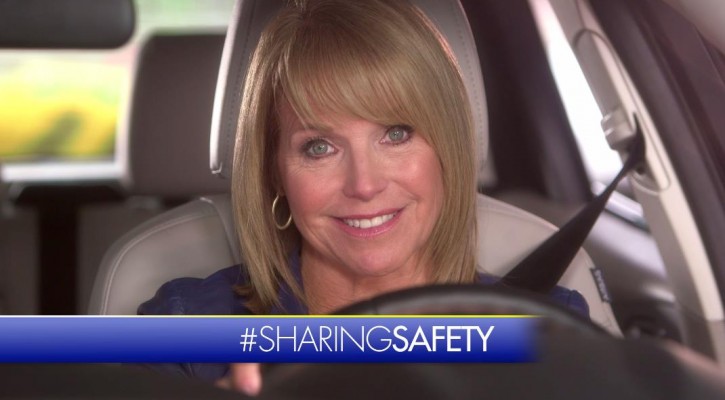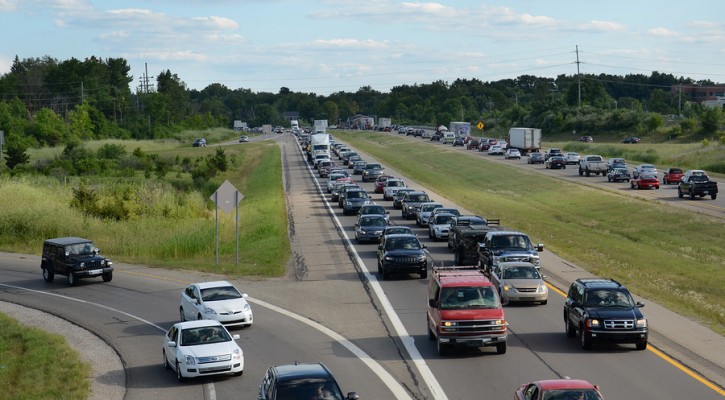Tag Archive: New drivers

Michelin And Katie Kouric Want Your Best Driving Safety Advice
November 16, 2015
Michelin North America and Katie Kouric have teamed up to collect the best driving advice that you were given when you were a new driver. Not only do they want your best piece of advice, they want the story behind it.
Michelin is tying this in with a survey they commissioned that shows what most people knew already; most people think they’re good drivers but feel that most other drivers aren’t so good. What that really means is that most people can recognize bad driving behaviors in others but not in themselves.
Here are the main findings from the survey:
- The majority of drivers are confident in their own driving abilities (81 percent rank themselves highly), but 66 percent have felt unsafe when someone else was at the wheel.
- 3 in 4 (73 percent) have witnessed an accident or experienced a “close call” firsthand (76 percent), and 62 percent have been in an accident that someone else caused.
- 69 percent see other motorists ignoring safe-driving practices daily.
- Not surprisingly, 75 percent of drivers admit to “offering advice from the other seat.”
- The driving advice people receive most frequently includes signaling before changing lanes (75 percent) and staying in the right lane unless you’re passing (68 percent).
The survey also found that most people received their best piece of driving advice from their dad (52%), mom (32%), and driving instructor (27%). That’s great if Dad was truly a good driver and gave good advice. The problem is that too many bad drivers, without realizing it, are passing on their bad driving behaviors to their teens.
Most of the bad driving behaviors teens learn from their parents were learned by observing their parents drive from the time they were toddlers until they started to drive on their own. Those learned behaviors combined with a teen’s natural tendency to take risks, led to the deaths of 1,691 teen drivers in 2013.
Here’s a chance for both teens and their parents to pass on those good bits of driving wisdom and hopefully, through the story behind the advice, help others to be safer on the road.
Read more: Katie Couric, Michelin Encourage Drivers to Share Best Advice on Safe Driving

Ask The Driving School Instructor: Interstate Driving
October 20, 2014
Question: When should a permit driver drive on the interstate for the first time?
Answer: This is a hard one to answer. Driving on the interstate should be a required part of every new driver’s training but when to attempt it will be different for each driver.
The first thing to know is that, scary as they may seem, driving on interstates or limited access highways, is actually safer than driving on a country road. More fatal crashes occur on country roads than on interstates. However, interstates do require special skills.
Interstates require that a driver drive at high speeds. Driving too slowly on the interstate can be dangerous. Interstates also require that a driver know how to merge smoothly into traffic and the new driver may be dealing with a lot more traffic than he or she is used to.
As far as when to get on the interstate for the first time, the new driver should have a lot of driving experience including driving at higher speeds. After getting experience in driving in heavier traffic, the new driver should first practice on multi-lane highways with speeds above 50 mph.
Instead of jumping into city interstate traffic, it’s best to expose the new driver to the interstate in a rural area where traffic may not be so heavy. After getting experience there, the driver can be slowly exposed city traffic.
When entering the interstate, it’s important to remember that you need to get up to interstate speeds on the entrance ramp. As you near the end of the ramp, watch for an opening in traffic and then adjust your speed to merge into that opening. Never stop on an entrance ramp unless traffic just won’t give you enough clear space to merge. After merging into traffic, keep at least a two second following distance between you and the vehicle ahead.
Once you’re on the interstate, you should practice merging and changing lanes. Remember to stay out of the far left lane unless you’re passing slower traffic. Once you’ve passed, move back into the center or right lane.
Pay attention to speed limit signs. Speeds on rural interstates may be as high as 70 mph but can go down as low as 55 mph when nearing a city. Driving with the flow of traffic doesn’t mean you should go over the speed limit. Driving too fast limits the reaction time you need to make decisions to avoid a crash.
If you miss your exit, never try to stop and back up. Go to the next exit and reenter the interstate in the other direction to get back to your exit. When exiting the interstate, get into the correct lane at least one-half a mile before the exit. Don’t slow to exit until you enter the exit ramp.
